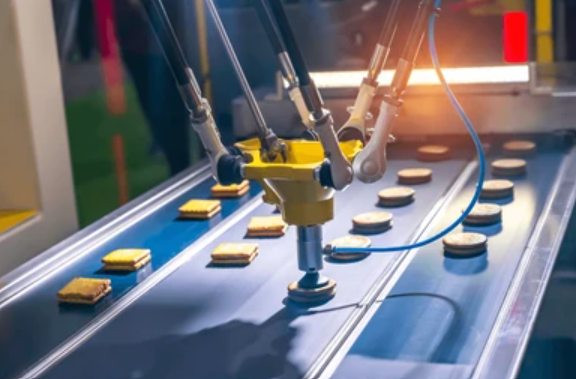
When senior operators leave, they take with them the memory of the factory, such as blending longer on humid days or tweaking temperatures after an overnight hold. These undocumented, experience-based process control heuristics live in the heads and habits of personnel who know the inner workings of the plant. This knowledge gets passed on in breakrooms, but its variability has historically been challenging to automate.
From a systems engineering perspective, this is domain intelligence; nonlinear, often nonverbal, and heavily conditioned by site-specific operating history and conditions. Since this knowledge is rarely documented and often resides in the minds of experienced personnel, it can be difficult to replicate. However, we are reaching a point where the manufacturing industry workforce is retiring, and fewer graduates are seeking to fill open positions. Leaders in the space are grappling with retaining knowledge from their experienced workers and simplifying it for their newest, and likely smaller, teams.
This is why agents are critical to the operation. Agents built with advances in AI and machine learning are beginning to turn the tables, especially in areas like pattern recognition and anomaly detection. They are designed not just to detect anomalies, but to capture and democratize this expertise, regardless of tenure.
Reasoning, recommending, and predicting
Today, AI agents can read and contextualize both structured data, such as sensor outputs, SCADA tags, and machine logs, and unstructured inputs, including operator comments and manuals. With access to a 360-degree view of operations, they can make accurate analyses and predictions.
For instance, at one of our chicken processing customers, we saw a 2500% surge in production output on a line that was previously supply-constrained. One driver was quality modeling. By predicting and controlling the air pockets that form during ham processing, we reduced reprocessing. Our AI agent learned to anticipate key variables, like emulsification temperature, brine absorption timing, and pressure, that had historically been monitored but never truly understood in sync.
Where AI agents excel is in how they can predict process deviations with enough lead time to intervene and adjust variables tailored to specific SKUs, formats, and recipes, or share recommendations for operators to make these adjustments. In other words, by implementing gateways, agents can interface directly with machines, making real-time parameter changes where it’s safe and permitted.
These tools also continue to learn over time, alongside the operators using them. Each time an AI agent or copilot makes a good recommendation, operators can accept the suggestion, reinforcing the model’s behavior.
Empowering a behavioral shift
Frontline engineers often have decades of experience doing things a certain way that has worked reliably for them. So, if their first interaction with a new system goes badly, they are not likely to trust it. That’s why it’s important that leaders implementing AI models prioritize optimizing accuracy and speed first. To make sure what it does, it does well, with visible time-saving benefits.
The easiest way to ensure a quick win is to start small: with low-risk, high-credibility use cases where the agent can prove itself. One example is targeting micro stoppages like label jams or conveyor belt delays. These are frustrating for operators and slow the line down, but AI can easily monitor and flag these issues before they cause downstream backups, presenting immediate value for operators.
As well as proving the co-pilot’s performance, it is important to recognize the operators who are using them successfully, too. Issuing certificates that offer tangible markers of expertise that they take pride in can be a great motivator as well as a benchmark of skills.
Hard engagement metrics you can monitor and praise include the percentage of stoppages that are correctly identified and assigned, how often recommended actions are accepted, and how consistently operators follow through on alerts and predictions. In some plants, over 90% of stoppages are now tracked and resolved through co-pilots, and operators are accepting agent recommendations at rates that signal behavioral change. When that happens, onboarding gets faster, response times get tighter, support tickets are reduced, and tribal knowledge starts becoming AI-enabled institutional memory.
Bringing manufacturing back to America
There is a lot of talk about bringing manufacturing back to the Americas, but we need to move fast enough where it counts. The old jobs aren’t coming back, and the new ones demand faster learning curves, trust in AI, and confidence in decisions made by people and machines together. That gap, between who we were and what we need to become, is where the risk lives.
Co-pilots are the start of a structural shift where digital agents are embedded in plant operations and work alongside department leads like teammates. These agents will own routines, track performance, escalate exceptions, and stay connected to the physical systems they manage.
America is in a strong position to lead the shift toward a machine-human-infused manufacturing environment. The IIJA, combined with CHIPS and the Inflation Reduction Act, catalyzed over $1 trillion in public and private investment in manufacturing infrastructure. Moreover, 93% of US manufacturers see AI as a top business priority, and 61% expect to meet their AI deployment goals within 11 months.
American manufacturing won’t win by cutting costs or offshoring through cheap labor, but by compounding intelligence across our factories, our workers, and our infrastructure. It’s going to take more than AI and software to bridge the gap. It will require bold enterprise adoption, aligned national policy, and serious investment in energy and infrastructure.





